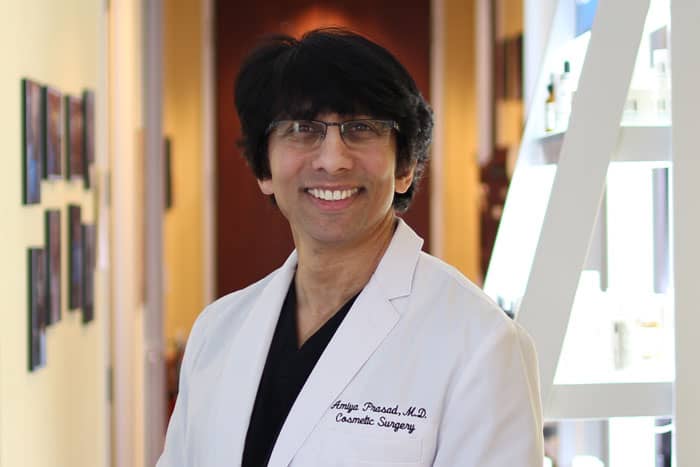Why Droopy Lower Eyelids (Ectropion) are Avoidable in Eye Bag Removal Surgery
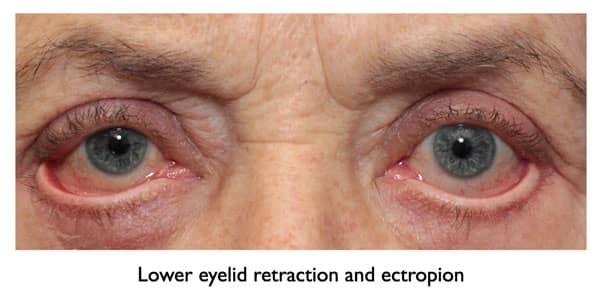
A common concern for people considering lower eyelid surgery for under eye bags is if the lower eyelids would sag after surgery. This is in part due to the conspicuous “bug eyed” or “sad eyed” appearance of some celebrities and politicians my patients mention. I’ll share my approach to lower eyelid surgery and avoid sagging.
People with under eye bags frequently express fear that removing the volume of fat that produces eye bags will cause the eyelid skin to sag because there is no volume to support the skin. They think about the drooping skin that persists after a significant weight loss.
The lower eyelid anatomy differs from the abdomen. The orbicularis oculi muscle, which supports the lower eyelid, is in front of the fat, unlike the abdominal muscles, which are behind the fat under the skin.
The orbicularis oculi muscle serves as a belt, tightening the lower eyelid after fat is sculpted during surgery. Other structures, such as the lateral canthal tendon, may require treatment if there is laxity in order to prevent lower eyelid sagging.
Lower Eyelid Problems After Blepharoplasty
Rounded lower eyelids are medically known as lower eyelid retraction. Lower eyelid retraction is commonly found when lower eyelid surgery is performed through an external incision known as transcutaneous blepharoplasty. Unlike my preferred procedure, transconjunctival blepharoplasty, which involves no incision on the eyelid skin, the transcutaneous blepharoplasty technique requires an incision on the lower eyelid, right below the eyelashes.
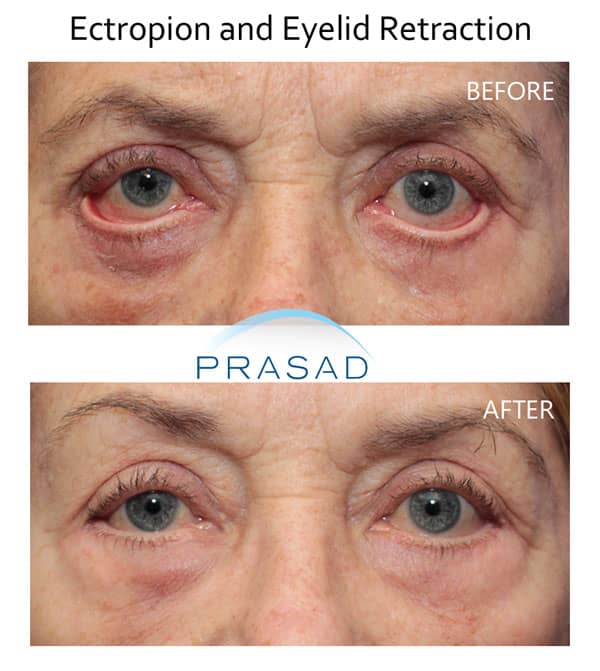
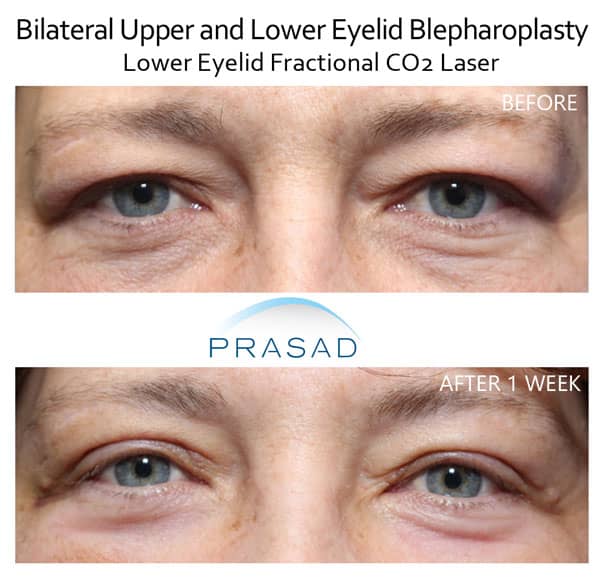
What Causes Droopy Under Eyes After Blepharoplasty?
Transcutaneous blepharoplasty may compromise the eyelid skin’s support, such as the orbicularis oculi muscle and the lateral canthal tendon, causing the lower eyelid to droop downward. Well-intentioned surgeons will frequently remove skin in order to correct skin wrinkles. Unfortunately, this can result in skin loss, which contributes to lower eyelid retraction and ectropion.
Lower Eyelid Wrinkles Treatments
Skin wrinkling on the lower eyelids, in my experience, is caused by collagen loss and a decrease in skin quality. Rather than removing skin to treat wrinkles, I choose to use lasers, radio frequency technologies, and PRP to enhance the appearance of wrinkles and crepey skin, without surgery.
I frequently employ lasers such as a fractional CO2 laser, a fractional erbium laser, and a long pulsed Erbium laser, which we call a “smooth eye” laser.
PRP, or platelet-rich plasma, is a concentrated form of wound healing and growth factors found in the blood that can help repair an injury like a cut. All of these tools contribute to collagen formation, increased blood flow, and improved outer skin texture.
How to Avoid Ectropion After Lower Eyelid Surgery
I regularly perform lower eyelid surgery to remove under eye bags through a technique known as transconjunctival blepharoplasty. This method avoids an external incision, preserving the natural shape and character of your eyes. The results look natural, as if the eye bags were never there.
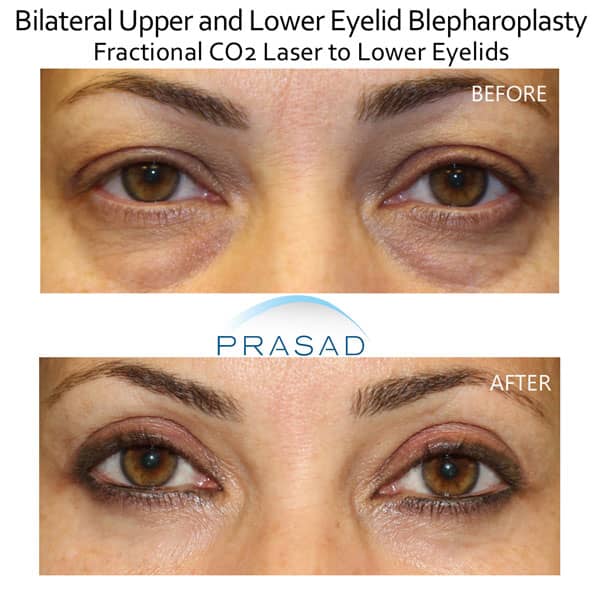
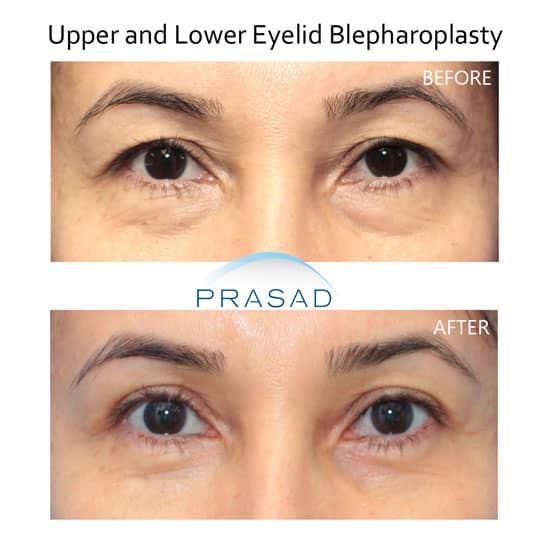
The blepharoplasty is carried out under local anesthesia with LITE IV sedation, avoiding the risks and complications associated with general anesthesia. My patients usually return to work about a week after surgery.
Sagging Lower Eyelid Treatments
Fat reduction in the lower eyelids does not cause the skin to sag. The approach to surgery and the use of lasers and PRP can make all the difference in a situation, allowing you to look your best.
Lower Eyelid Surgery Manhattan, NYC and Long Island, New York
Dr. Amiya Prasad is a Diplomate of the American Board of Cosmetic Surgery and a Fellowship-trained oculofacial plastic and reconstructive surgeon. He’s been in practice in New York City and Long Island for over 25 years.
Dr. Prasad also routinely performs cosmetic upper eyelid surgeries to treat hooded eyes, and specialized procedures such as Asian double eyelid surgery and eyelid ptosis correction. As a cosmetic eyelid surgery specialist, he also performs revision eyelid surgeries to address complications of surgery performed by other surgeons.
To schedule a consultation, you may contact us by filling out the form below, or call any of our offices at (212) 265-8877 in Manhattan, New York City; (516) 742-4636 in Garden City, Long Island; or (703) 356-1336 in Vienna, Virginia.

